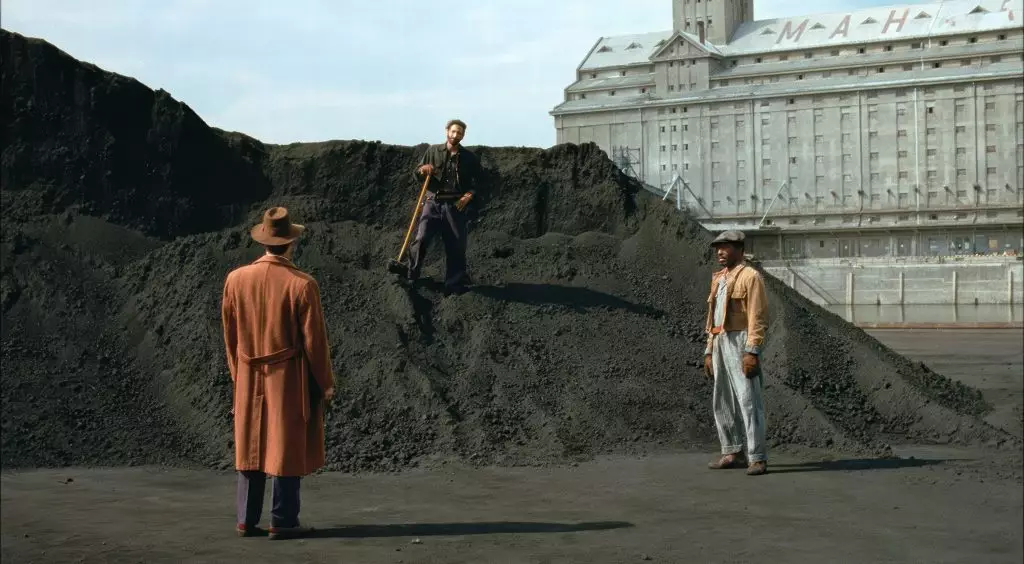In an era where Hollywood’s mainstream outputs often drown the unique voices of independent cinema, “The Brutalist,” directed by Brady Corbet, emerges as a remarkable exception. The film’s journey, marked by a surprising sweep at the Golden Globe Awards, demonstrates the unexpected potency of independent storytelling in a crowded industry. Winning three prestigious awards, including Best Feature – Drama and a Best Actor accolade for Adrien Brody, “The Brutalist” defies expectations and is gearing up for wider regional release. The film has grossed $1.1 million despite initially playing in only nine theaters, signaling significant interest and engagement from audiences.
At the heart of “The Brutalist” is a deeply personal narrative featuring Brody as a Hungarian World War II refugee who reinvents himself as an architect in the U.S. This character arc is further complicated by his collaboration with a cynical real estate mogul, portrayed by Guy Pearce. Their joint ambition—to design a community-centric architectural masterpiece—serves as a metaphor for the conflicts inherent in creating art against a backdrop of market-driven interests. Corbet’s decision to tell this poignant story through a realist lens, while nodding to grander thematic considerations, is what sets “The Brutalist” apart from typical film offerings.
This ambitious project, spanning over three hours, is not just another historical drama. Rather, it pulls viewers into a world where creativity clashes with commercialism, ultimately leaving a trail of destruction in its wake. The film has already drawn comparisons to the works of Michael Cimino and Paul Thomas Anderson, underscoring its artistic depth and ambitious scope.
One of the most impressive aspects of “The Brutalist” is how it was produced within a modest budget of under $10 million. Corbet’s candid remarks reveal a filmmaking process grounded in sacrifice and collaboration, emphasizing the dedication of the cast and crew who worked for significantly lower rates. This speaks volumes about the current landscape of independent filmmaking where financial constraints often push creators to innovate.
Corbet has expressed a philosophy that revolves around decisiveness in the filmmaking process. By limiting the number of voices involved in editorial decisions, he adeptly navigates the pitfalls that often inflate production costs in studio projects. This hands-on approach allows him to maintain creative integrity, ensuring that the final product is not diluted by excessive input from executives who may prioritize commercial potential over artistic vision.
The film’s initial run has garnered a diverse audience, particularly the under-35 demographic, who are drawn to its artistic merit and technical accomplishments rather than mainstream box-office allure. Its capability to engage younger film aficionados showcases the changing dynamics of film appreciation in contemporary culture. Notably, “The Brutalist” capitalizes on the unexpected technical feats that elevate its narrative, offering a cinematic experience that rivals big-budget productions without losing its indie charm.
As “The Brutalist” prepares for its wider release on January 24, the anticipation builds, particularly with the looming Oscar nominations. Its strategy to screen in IMAX further demonstrates a tactical approach to reach a broader audience and heightens the film’s visibility in awards season.
“The Brutalist” stands as a beacon of hope for independent cinema, illustrating that compelling storytelling, when paired with strong artistic vision, can triumph in the broader market. Brady Corbet’s ability to create a significant piece of art while navigating commercial challenges sets a refreshing precedent in film production. As audiences continue to seek depth alongside spectacle, the film’s success may pave the way for more daring projects that prioritize narrative complexity over mere entertainment. The triumph of “The Brutalist” not only marks a significant milestone for its creative team but also serves as a rallying point for indie filmmakers everywhere.

